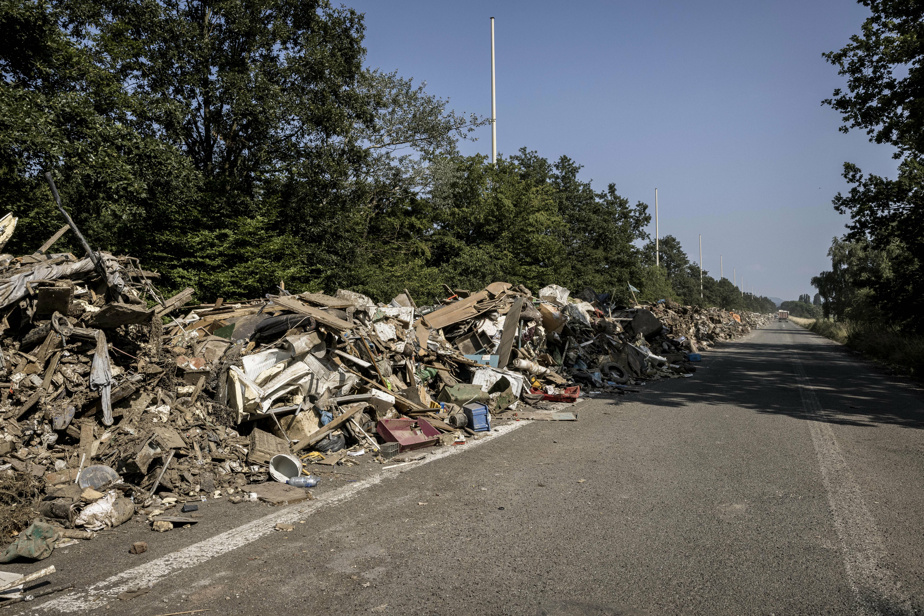Toys, books, muddy mattresses and broken cupboards or refrigerators: About 90,000 tons of waste from the deadly July floods piled up on an unused highway in eastern Belgium.
It’s a nationwide picture that stunningly shows the physical devastation of the extraordinary floods that killed 38 people on July 14 and 15, according to the official report.
In Herstal, in the agglomeration of Liege, one of the areas hardest hit by these floods, an old highway crossing a wooded area hosts an eight-kilometer-long, six-meter-high litter mountain.
Formless magma brought for six weeks by whole trucks after cleaning the edges of the rivers, from the banks of the Meuse to the valley of the Vesdre, one of the tributaries of this river.
A whole pile of backlogged “pieces of life” that also presents a challenge to the public administration of elected officials and waste treatment companies.
In total, the floods in Wallonia only produced about 160,000 tons of garbage, according to the authorities of this French-speaking region. This single stretch of highway concentrates more than half of it.
The transfer was gradual, explains Luc Guin, general manager of Intradel, the main waste treatment company in the province of Liege.
He said: “There was the first buffer (in the affected municipalities) and from the moment we made sure there were no more bodies, and that all the missing were found, we were able to collect everything.
The goal is to achieve the recycling of 60% of this waste, and the rest is intended for incineration or landfill by inviting other companies.
Given the scale of the task, it would likely take nine months to clear everything, a schedule on which elected local officials, keen to minimize disturbance to residents, are keeping a close eye on it.
Luc Joine ensures that there is no house within 500 metres, that there is little disturbance from the smell and that the rat control company has already stepped in on the site.
From an environmental point of view, choosing to store waste on the old traffic hub is a “good idea,” the manager boasts.
“Because of the potential for waste contamination with hydrocarbons, a site had to be found to prevent soil contamination. However, this road is asphalt, and the water is harvested when it rains, it is well suited.”
The cost of treating the waste at the three requested sites in Wallonia has been estimated at 30 million euros (44.6 million Canadian dollars), according to the regional environment minister, Celine Teller.

“Extreme twitteraholic. Passionate travel nerd. Hardcore zombie trailblazer. Web fanatic. Evil bacon geek.”


